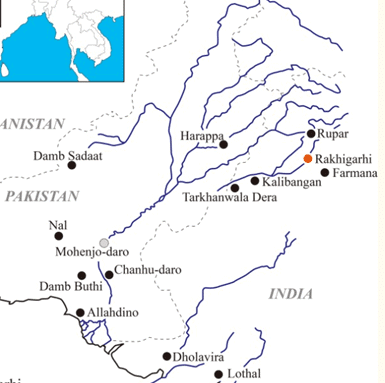History: CUET Mock Test - 10 - CUET MCQ
30 Questions MCQ Test - History: CUET Mock Test - 10
Which of the following Harappan sites is located in Afghanistan?
Which of the following Harappan sites yielded camel bones?
What was the fate of Bahadur Shah Zafar after the Revolt of 1857?
Which of the following actions were taken by the British after the revolt?
What major policy change did the British introduce after 1857?
How did the British ensure that another revolt would not occur?
What was the significance of the Revolt of 1857 in Indian history?
What was the primary objective of the Non-Cooperation Movement?
What philosophy did Mahatma Gandhi follow during the Non-Cooperation Movement?
What led to the suspension of the Non-Cooperation Movement?
How did the Non-Cooperation Movement impact Indian society?
Why did Gandhi emphasize non-violence in the struggle for independence?
Match the colonial laws with their effects on peasants

Match the leaders with their roles in the Revolt of 1857

Match the following causes of the Revolt of 1857 with their explanations

Which of the following statements are correct?
(A) The Bhakti movement emphasized devotion and personal connection with the divine.
(B) Bhakti saints composed their teachings in Sanskrit to reach a wider audience.
(C) Mirabai was a devotee of Lord Krishna and composed devotional songs.
(D) Bhakti saints rejected rigid caste hierarchies and rituals.
(E) The Bhakti movement was confined only to North India.
Choose the correct answer from the options given below:
Which of the following statements about the Sufi tradition are correct?
(A) Sufism emphasized love, compassion, and devotion to God.
(B) Sufi saints strictly followed orthodox Islamic law and rituals.
(C) The Chishti order of Sufism was known for its openness and charity.
(D) Sufi saints lived in khanqahs, which served as spiritual and social centers.
(E) Sufi poets only composed their works in Arabic.
Choose the correct answer from the options given below:
Which of the following statements about Kabir’s teachings are correct?
(A) Kabir rejected both Hindu and Muslim religious orthodoxy.
(B) He believed that God could be reached through love and devotion.
(C) Kabir supported idol worship as a way to connect with the divine.
(D) He composed his verses in Sanskrit to preserve religious traditions.
(E) Kabir’s teachings were later compiled into the Bijak and Guru Granth Sahib.
Choose the correct answer from the options given below:
Which of the following statements about the interaction between Bhakti and Sufi traditions are correct?
(A) Both traditions emphasized personal devotion to God over rituals.
(B) Bhakti and Sufi saints composed devotional songs in regional languages.
(C) Sufi saints strictly opposed the Bhakti movement and its teachings.
(D) Both traditions attracted followers from different castes and backgrounds.
(E) The Bhakti movement was only influenced by Hinduism and had no connection with Sufism.
Choose the correct answer from the options given below:
What did the rulers of Vijayanagara call themselves?
When was the land between the Tungabhadra and Krishna rivers acquired?
















